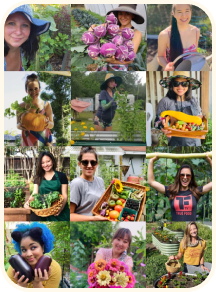Difference Between Host Plant and Pollinator Plant
In recent years, there has been a growing awareness of the crucial role that pollinators play in maintaining the health of ecosystems and supporting biodiversity.
Creating a pollinator-friendly garden is an excellent way to support the biodiversity of your region, and one of the essential aspects of such a garden is providing a haven for native plants that serve as pollinator hosts.
While both regular and pollinator plants play essential roles in sustaining pollinator populations, the distinction lies in the level of support provided. Pollinator plants go beyond attracting adults with nectar, actively contributing to the reproductive success of specific pollinator species.

By cultivating native plants that act as host plants, you not only enhance the beauty of your garden but also create a habitat that supports the entire life cycle of pollinators.
1. Native Plants and Their Importance
The term "native plants" refers to vegetation that naturally occurs in a specific region without human intervention. These plants have evolved alongside local wildlife, forming intricate relationships with native pollinators. Utilizing native plants in your garden establishes a connection between flora and fauna, promoting ecological balance.
2. Nectar Plants
At the heart of any pollinator-friendly garden are nectar plants, which serve as a crucial food source for adult butterflies and other beneficial insects like bees. These flowering plants, often vibrant in a variety of colors, attract pollinators and support their adult stage. Common blue violet, pale purple coneflower, and wild buckwheats are just a few examples of nectar-rich flowers that can transform your garden into a haven for pollinators.

3. Larval Host Plants
To complete their life cycle, butterflies require specific larval host plants where female butterflies lay their eggs. The young caterpillars then feed on these plants during their larval stage. Milkweed plants are well-known hosts for monarch butterflies, providing a safe place for them to lay their eggs and sustain the subsequent generations.
4. Butterfly Species and Specific Host Plants
Different butterfly species have specific host plant preferences. For instance, the Eastern Tiger Swallowtail relies on native trees like the tulip tree, while the Monarch butterfly depends on milkweed. Understanding these specific relationships is essential for creating a diverse and supportive environment for various butterfly species.

5. The Role of Native Bees and Other Insects
It's not just butterflies that benefit from a pollinator-friendly garden. Native bees, honey bees, bumble bees, and solitary bees play crucial roles in pollination. Providing a variety of plants that flower at different times throughout the year ensures a continuous supply of food for these essential pollinators.

6. Creating Your Pollinator Garden
Creating a butterfly garden doesn't have to be a daunting task. Follow these easy steps to establish your own pollinator haven:
-
Research: Learn about the native species in your region and their specific needs.
-
Choose a variety of plants: Select a diverse range of flowering plants that bloom at different times, providing a constant food source.
-
Consider soil type: Different plants thrive in different soil conditions, so tailor your choices to your garden's soil type.
-
Provide water sources: Pollinators need water, so include a shallow dish or birdbath in your garden.
-
Avoid invasive species: Invasive plants can have negative impacts on native ecosystems, so opt for native alternatives.
Final thoughts
A pollinator-friendly garden is not only a beautiful addition to your landscape but also a vital contributor to the well-being of our ecosystems.
By incorporating native plants, understanding the life cycles of different butterfly species, and considering the needs of various pollinators, you can create a garden that plays a crucial role in supporting biodiversity and mitigating the effects of climate change!





























Leave a comment